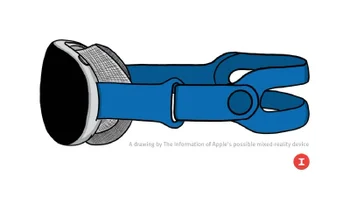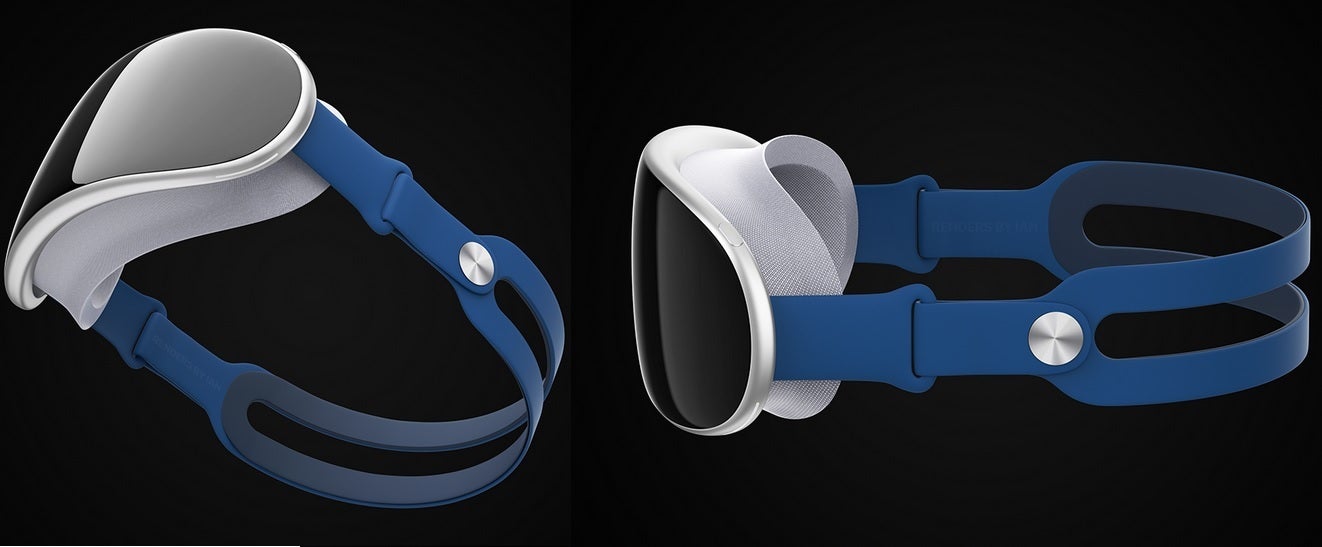Apple's Mixed Reality headset is the subject of concept renders

You might recall that illustration of Apple's upcoming mixed reality headset that is expected to see the light of day next year. The sketch was originally published by The Information earlier this year and was based on leaks and a look at a late-stage prototype. Now, concept render artist Ian Zelbo has produced a more detailed concept render of the headset which he calls Apple View.
Apple's mixed reality headset won't need the iPhone by its side
The Mixed Reality headset will use both Virtual Reality (VR) and Augmented Reality (AR). The latter slaps a layer of data on top of real-world imagery. For example, the Live View AR walking directions on Google Maps uses your phone's front-facing camera to show where you are at the moment and a layer of navigational directions along with the names of landmarks are placed on top.

Original illustration of Apple's mixed reality headset presented by The Information based on a late-stage prototype
VR is a platform that makes it feel as though you are somewhere else, even a made-up location. Wearing a headset, you get a 3D view of a totally fabricated environment. Earlier this month, TF International analyst Ming-Chi Kuo told clients that Apple's headset will use state-of-the-art motion detection so that users can control the device with gestures instead of having to carry around a controller that is bound to break or get lost.
The 3D sensors that Apple will include with its headset will be designed to capture the smallest of hand and finger movements. And while earlier reports indicated that the mixed reality headset would require that an iPhone was nearby to handle certain processing tasks, Kuo put the kibosh on that rumor earlier this month when he stated that the chips powering the device will be doing heavy-duty processing work.

Concept render of Apple's mixed-reality headset made by Ian Zelbo based on leaks and The Information's illustration
Considering that Apple now has two new powerful chips that would be ready in time to be used on the headset (the M1 Pro with 33.7 billion transistors, and the M1 Max with 57 billion transistors), there is a very good chance that users of the headset won't need to have their iPhone in their pocket in order to use the mixed reality headset. Kuo says that the device will "seamlessly switch between AR and VR to provide an innovative headset experience."
Kuo says that Apple is working with developers to make sure that there will be a "comprehensive range of applications" ready for the device by the time it is ready to be released. The mixed reality headset is not going to be a cheap device with some analysts forecasting a retail price in the area of $3,000. For that price, buyers will be getting a headset with at least 15 cameras according to a report from The Information which claimed to have seen a late-stage prototype of the device which was the model for its illustration.
The cameras will be used to collect data and to track the user's eye movements. There will be two 8K high-resolution screens but in typical Apple fashion, to save battery life and to reduce the demands on the processors, Apple lowered the resolution of the display in the areas that would be considered in the user's peripheral vision. Because of the expense, Apple expects to ship only 250,000 units in its first year.
Apple will follow the mixed reality headset with the long-awaited Apple Glass
Following the release of the mixed reality headset, Apple will supposedly be prepping the AR Apple Glasses. These will be traditional glasses with AR capabilities similar to the infamous Google Glass. When "Project Glass" was introduced in April 2012, it looked to be the device that would eventually replace the smartphone. But the smartphone was not yet ready to be replaced and Google Glass was too far ahead of its time.
With Google Glass now used by businesses, Apple must feel that the public might be more receptive to the product than they were the first time around. The release of Apple Glass will be closely watched to see whether AR glasses will be the next big thing after the smartphone era reaches its conclusion.










Things that are NOT allowed: